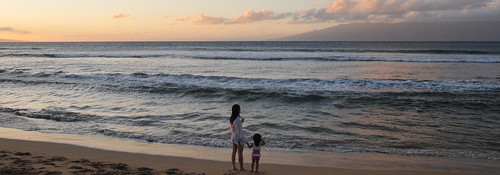Maui wildfires burn through Lahaina – it’s a reminder of the growing risk to communities that once seemed safe
Maui #Maui

Thousands of people were evacuated along Maui’s popular west coast as wildfires spread through buildings and hillsides starting Aug. 8, 2023, powered by strong winds from an offshore hurricane. Lahaina, a tourist town of over 13,000 residents, was in flames.
Most fires in the U.S. are suppressed before they have a chance to threaten communities, but the winds from Hurricane Dora were too strong to send up helicopters to help contain the blazes, leaving firefighters to battle the fires on the first day. The U.S. Coast Guard rescued several people from the waters off Lahaina who were trying to escape the smoke and flames.
With more fires burning on the Big Island of Hawaii, Lt. Gov. Sylvia Luke issued an emergency declaration, activating the National Guard to help.
Fires have become an increasing risk in many areas of the U.S. that people once considered safe.
Over the past two decades, a staggering 21.8 million Americans found themselves living within 3 miles (5 kilometers) of a large wildfire. Nearly 600,000 of them were directly exposed to the fire, with their homes inside the wildfire perimeter. That number – people directly exposed to wildfires – more than doubled from 2000 to 2019, my team’s recent research shows.
But while commentators often blame the rising risk on homebuilders pushing deeper into the wildland areas, we found that the population growth in these high-risk areas explained only a small part of the increase in the number of people who were exposed to wildfires.
Instead, three-quarters of this trend was driven by intense fires growing out of control and encroaching on existing communities.
That knowledge has implications for how communities prepare to fight wildfires in the future, how they respond to population growth and whether policy changes such as increasing insurance premiums to reduce losses will be effective.
What climate change has to do with wildfires
Hot, dry weather pulls moisture from plants and soil, leaving dry fuel that can easily burn. On a windy day, a spark from a power line, campfire or lightning can start a wildfire that quickly spreads.
Story continues
Recent research on California’s fires found that almost all of the increase in that state’s burned area in recent decades was due to anthropogenic climate change – meaning climate change caused by human activities.
Our new research looked beyond just the area burned and asked: Where were people exposed to wildfires, and why?
Where wildfire exposure was highest
I am a climate scientist who studies the wildfire-climate relationship and its socioenvironmental impacts. Colleagues and I analyzed the boundaries of more than 15,000 large wildfires across the lower 48 states and annual population distribution data to estimate the number of people exposed to those fires.
If you picture wildfire photos taken from a plane, fires generally burn in patches rather than as a wall of flame. Pockets of homes within the fire boundary survive, but many also burn.
The 2018 fire that destroyed Paradise, Calif., began as a small vegetation fire that ignited new fires as the wind blew its embers. NIST
While the population has grown in the wildland-urban interface – the region where houses intermingle with forests, shrublands or grasslands – we found that population growth accounted for only about one-quarter of the increase in the number of humans directly exposed to wildfires across the lower 48 states from 2000 to 2019.
Three-quarters of the 125% increase in exposure was due to fires increasingly encroaching on existing communities. The total burned area increased only 38%, but the locations of intense fires near towns and cities put lives at risk.
In California, the state with the most people exposed to fires, several wildfire catastrophes hit communities that had existed long before 2000. Almost all these catastrophes occurred during dry, hot, windy conditions that have become increasingly frequent because of climate change.
What communities can do to lower the risk
Wildfire risk isn’t slowing. Studies have shown that even in conservative scenarios, the amount of area that burns in Western wildfires is projected to grow in the next few decades.
How much these fires grow and how intense they become depends largely on warming trends. Reducing greenhouse gas emissions will help slow warming. Communities will have to both adapt to more wildfires and take steps to mitigate the impact.
Developing community-level wildfire response plans, reducing human ignitions of wildfires and improving zoning and building codes can also help prevent fires from becoming destructive.
This is an update to an article originally published July 3, 2023.
This article is republished from The Conversation, a nonprofit news site dedicated to sharing ideas from academic experts. Like this article? Subscribe to our weekly newsletter.
It was written by: Mojtaba Sadegh, Boise State University.
Read more:
Mojtaba Sadegh receives funding from the Joint Fire Science Program and National Science Foundation.